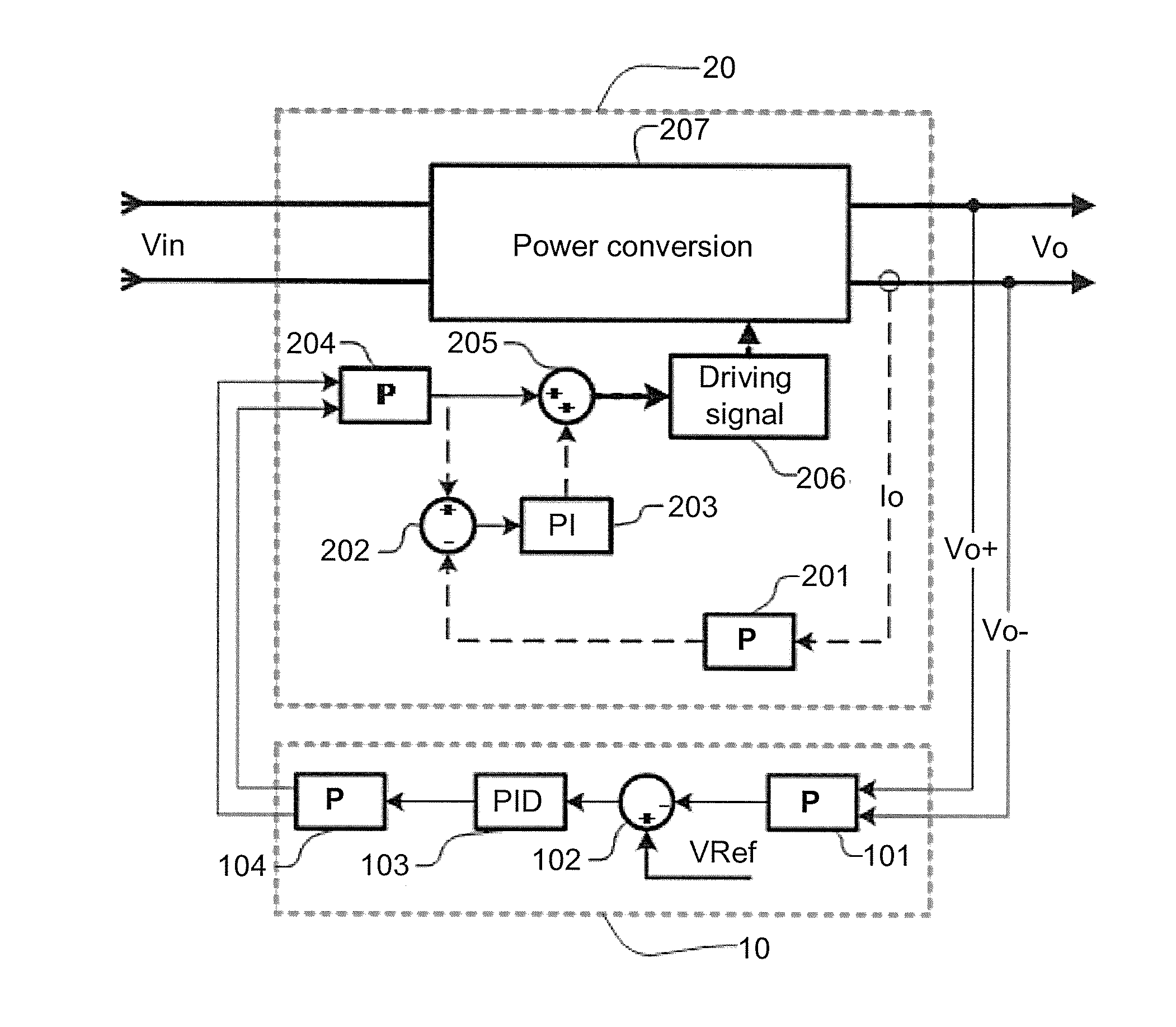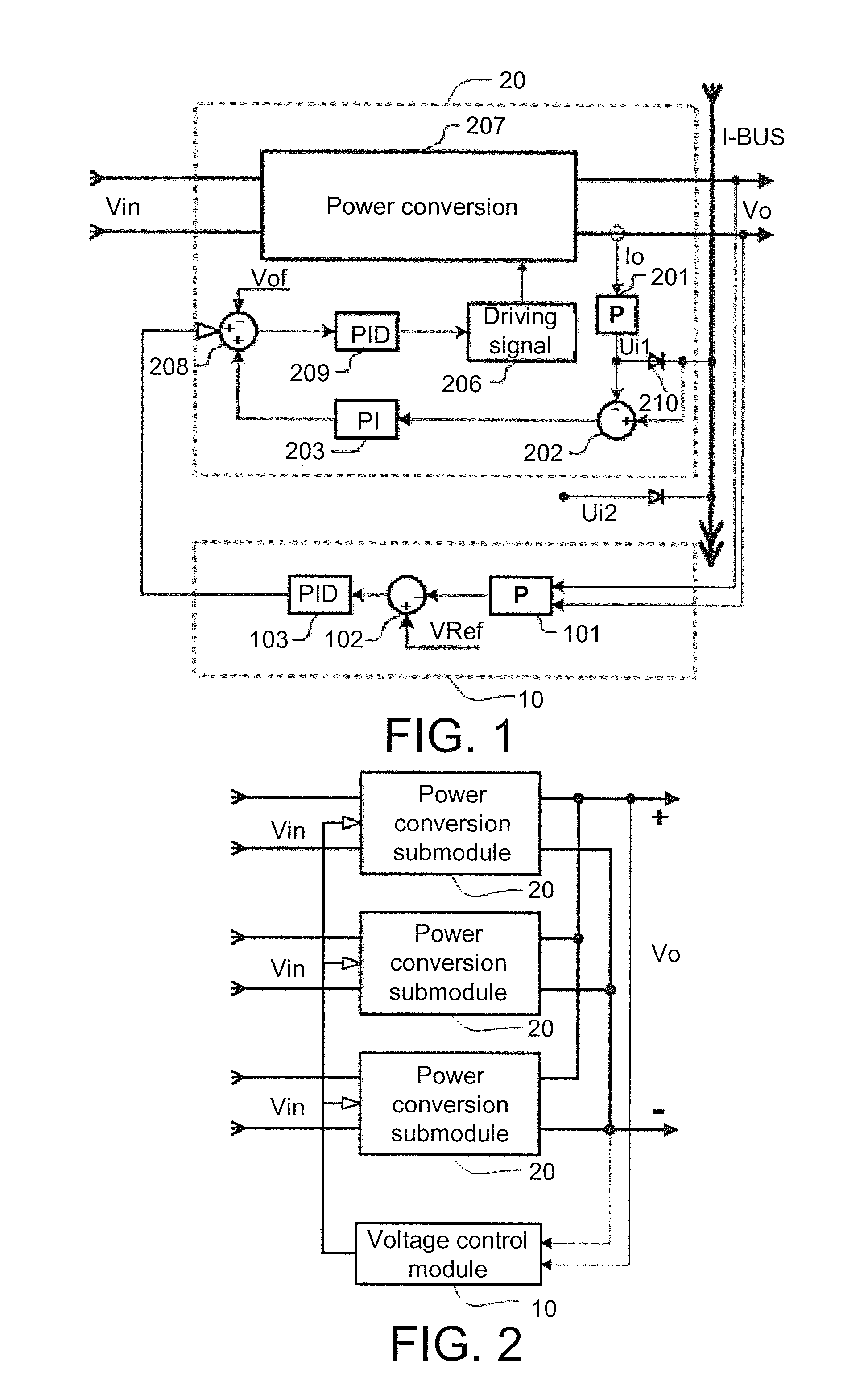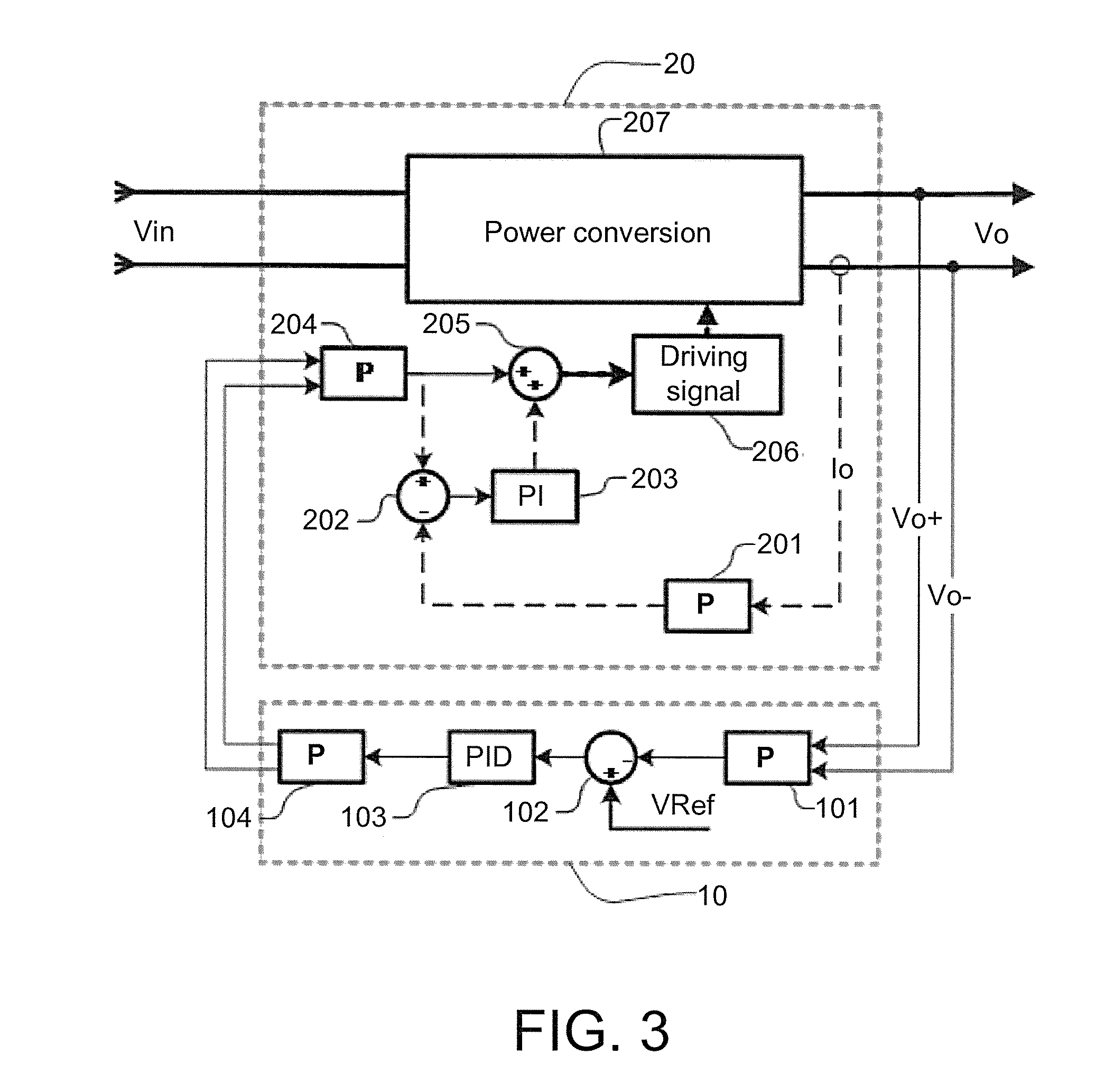Parallel current-sharing device and control method without current-sharing bus
a current-sharing device and control method technology, applied in the field of multi-module parallel current-sharing devices and control methods without current-sharing buses, can solve the problems of increasing the complexity and fault rate of the system, increasing the cost of implementing current-sharing through a current-sharing bus and the complexity of design and production, and the system response becomes slower, etc., to achieve excellent interference suppression capability, simple design, production and debugging of the circuit of the parallel current-sharing devi
- Summary
- Abstract
- Description
- Claims
- Application Information
AI Technical Summary
Benefits of technology
Problems solved by technology
Method used
Image
Examples
Embodiment Construction
[0023]Preferred embodiments of the present invention are described below in detail in combination with the accompanying drawings.
[0024]Embodiment 1: as shown in FIG. 2 and FIG. 3, the present embodiment provides a parallel current-sharing control device without a current-sharing bus, comprising: a voltage control module 10 and three power conversion submodules 20. The voltage control module 10 comprises a first differential amplifier 101, a voltage error amplifier, and a differential driver 104. The voltage error amplifier comprises a voltage subtracter 102 and a PID regulator 103. A terminal voltage signal totally output by the three parallel power conversion submodules is sampled and scaled by the first differential amplifier 101 and then connected to a “−” input end of the voltage subtracter 102 of an outer voltage loop, and a set voltage reference is connected to a “+” input end of the voltage subtracter 102, obtaining an error signal. The error signal is amplified by the PID re...
PUM
 Login to View More
Login to View More Abstract
Description
Claims
Application Information
 Login to View More
Login to View More - R&D
- Intellectual Property
- Life Sciences
- Materials
- Tech Scout
- Unparalleled Data Quality
- Higher Quality Content
- 60% Fewer Hallucinations
Browse by: Latest US Patents, China's latest patents, Technical Efficacy Thesaurus, Application Domain, Technology Topic, Popular Technical Reports.
© 2025 PatSnap. All rights reserved.Legal|Privacy policy|Modern Slavery Act Transparency Statement|Sitemap|About US| Contact US: help@patsnap.com



